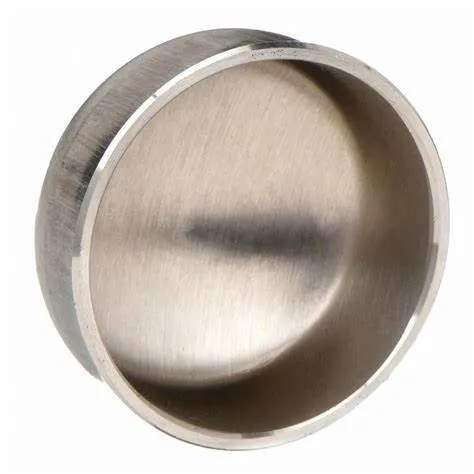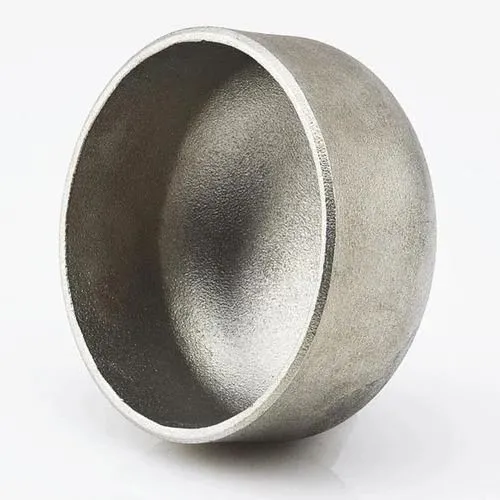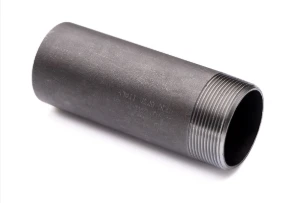JIS B2311 minangka Standar Industri Jepang sing nyakup fitting pipa butt-welding, kalebu tutup sing digunakake ing sistem pipa. Tutup welding butt nyedhiyakake tujuan kanggo nutup ujung pipa, nyedhiyakake segel kanggo nyegah bocor utawa kontaminasi. Iki minangka introduksi kanggo tutup las butt JIS B2311:
- 1. JIS B2311 Standard:
- - Standar JIS B2311 nemtokake syarat kanggo desain, dimensi, bahan, manufaktur, lan tes fitting butt-welding, kalebu tutup, ing sistem pipa.
- - Standar kasebut njamin tutup sing diprodhuksi selaras karo standar JIS ketemu standar kualitas lan kompatibel karo komponen pipa liyane.
- 2. Butt-Welding Cap:
- - Tutup welding butt, miturut JIS B2311, minangka fitting sing dirancang kanggo nutupi lan nutup ujung pipa kanthi aman, menehi perlindungan lan njaga integritas sistem pipa.
- - Caps digunakake ing kahanan ngendi mburi pipe mbutuhake penutupan, salah siji permanen utawa sementara, kanggo nyegah bocor, kontaminasi, utawa kanggo nyedhiyani Rampung kanggo sistem.
- 3. Bahan lan Konstruksi:
- - Tutup las bokong miturut spesifikasi JIS B2311 kasedhiya ing macem-macem bahan kayata baja karbon, baja tahan karat, lan baja paduan kanggo nyukupi syarat aplikasi sing beda.
- - Caps iki diprodhuksi nggunakake cara construction standar kanggo mesthekake sambungan kuwat lan bocor-free nalika gandheng kanggo mburi pipe.
- 4. Aplikasi lan Keuntungan:
- - Tutup welding bokong nemokake aplikasi ing macem-macem industri, kalebu lenga lan gas, proses kimia, pabrik perawatan banyu, lan liya-liyane ing ngendi ujung pipa kudu ditutup kanthi aman.
- - Caps nyedhiyani pangayoman kanggo pipe ends saka unsur lingkungan, nyegah kontaminasi, lan mbantu njaga karesikan lan integritas saka sistem pipa.
- 5. Instalasi lan Welding:
- - Praktek instalasi sing tepat, kalebu keselarasan sing bener, nyiapake ujung pipa, lan teknik welding, penting nalika nginstal tutup welding butt kanggo njamin segel sing nyenyet lan bocor.
- - Welding minangka cara umum kanggo nempelake tutup menyang pipa, nyedhiyakake penutupan sing aman lan permanen sing bisa tahan tekanan, variasi suhu, lan aliran cairan ing sistem.
- Ringkesan, tutup welding butt JIS B2311 minangka komponen penting sing digunakake ing sistem pipa kanggo nutup lan nglindhungi ujung pipa kanthi aman. Tutup iki cocog karo syarat standar kanggo njamin kualitas, linuwih, lan kompatibilitas ing aplikasi industri ing ngendi tutup pipa lan proteksi dibutuhake.
What Is a Butt Welding Cap and How Is It Used in Industrial Piping?
In industrial piping systems, end-of-line sealing and branch closures require robust solutions. A butt welding cap serves as a critical component for terminating pipes securely. By providing a seamless, welded closure, this fitting maintains system integrity, prevents leaks, and supports compliance with industry standards.
What Is a Butt Welding Cap?
A butt welding cap—also called a pipe end cap or buttweld end cap—is a round fitting designed to close off the end of a pipe. It’s manufactured to match the pipe’s outer diameter and schedule, with either a hemispherical or flat face. To install, both the pipe end and cap are beveled to form a V‑groove, enabling full‑penetration, fusion welds. Common materials include carbon steel, stainless steel, nickel alloys, and other engineered grades, chosen to satisfy pressure, temperature, and corrosion‑resistance requirements.
How Is Butt Welding Cap Used in Industrial Piping?
Butt welding caps find application across oil & gas, petrochemical, power generation, water treatment, and general process industries for both permanent and temporary closures. During hydrostatic testing, technicians install caps to seal off sections of piping while monitoring for leaks. In new construction or retrofit projects, caps terminate branch lines, future tie‑in spools, or dead‑end mains until system expansion. Welders prepare each joint by cleaning and beveling surfaces, aligning the cap precisely, and executing a root pass followed by filler passes per the qualified Welding Procedure Specification (WPS). Post‑weld heat treatment and non‑destructive examination (NDE)—such as radiography or ultrasonic testing—verify weld integrity and compliance with ASME B16.9 and related standards. Additionally, temporary caps enable safe isolation during maintenance, allowing for segment testing and dewatering under regulatory protocols.
Benefits and Best Practices
Butt welding caps offer a smooth‑bore transition that minimizes flow disruption and stress concentration. Their full‑penetration welds deliver exceptional structural strength and leak resistance. To optimize performance, engineers should:
Select caps with matching material grades and wall thicknesses
Adhere to proper bevel angles and joint fit‑up tolerances
Follow qualified WPS protocols rigorously
Consider cladding or protective coatings in corrosive environments to extend service life
Regular inspection and thorough documentation ensure long‑term reliability and safe operation under demanding conditions.
Butt welding caps are indispensable components for achieving durable, leak‑proof pipe terminations in a wide range of industrial applications.
Butt Welding Cap FAQs
What is a butt welding cap?
|
What materials are commonly used?
|
What standards govern butt welding caps?
|
How are butt welding caps installed?
|
Where are butt welding caps typically used?
|
What are the advantages of threaded caps?
|
















